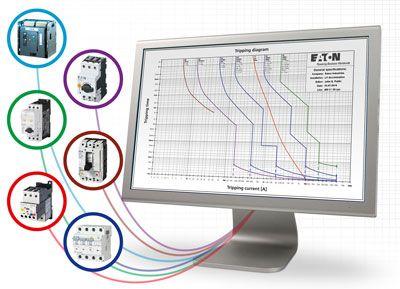Extended characteristic program for protective devices of IE3 motors
- Details
- Hits: 4589
 Eaton has updated and expanded the functionality of its free "Curveselect" software tool, which now also includes the adjusted characteristics of the "IE3 ready" motor protection switch. With the characteristic program, tripping characteristics of protective devices can be conveniently visualized, compared and documented. Curveselect enables users to competently assess the interplay between different Eaton devices and Eaton components in combination with other manufacturers' protective devices.
Eaton has updated and expanded the functionality of its free "Curveselect" software tool, which now also includes the adjusted characteristics of the "IE3 ready" motor protection switch. With the characteristic program, tripping characteristics of protective devices can be conveniently visualized, compared and documented. Curveselect enables users to competently assess the interplay between different Eaton devices and Eaton components in combination with other manufacturers' protective devices. For the best possible protection and economical use of operating equipment such as systems, motors, generators, transformers or lines, it is necessary to adapt the tripping curves of the protection devices exactly to the individual performance of the equipment to be protected. The effective and comprehensive protection of equipment usually requires several switching devices that work together accordingly. In order to accurately assess the triggering behavior of these devices for a particular application, it is necessary to consider the actual settings on the various components. The selectivity of such a constellation is difficult to determine with the tripping characteristics printed in catalogs. Here Curveselect provides extensive assistance. Specific tripping curves can be easily generated and documented according to all individual switch settings.
The devices stored in the program also include the NZM, IZM and BZM circuit breakers, the FAZ miniature circuit breakers, and motor protectionrelay ZB and ZEB as well as fuses gL or gG. Additional tripping characteristics can also be freely defined, so that, among other things, medium-voltage circuit breakers or devices from other suppliers can also be analyzed. Freely definable curves allow different scenarios to be viewed directly. Motor run-up curves can be used to check whether the selected motor protection device enables trouble-free start-up of a three-phase asynchronous motor. In addition, the user can easily clarify whether the infeed switches correspond to the upstream medium-voltage protection or whether existing devices also guarantee sufficient protection for planned extensions.
